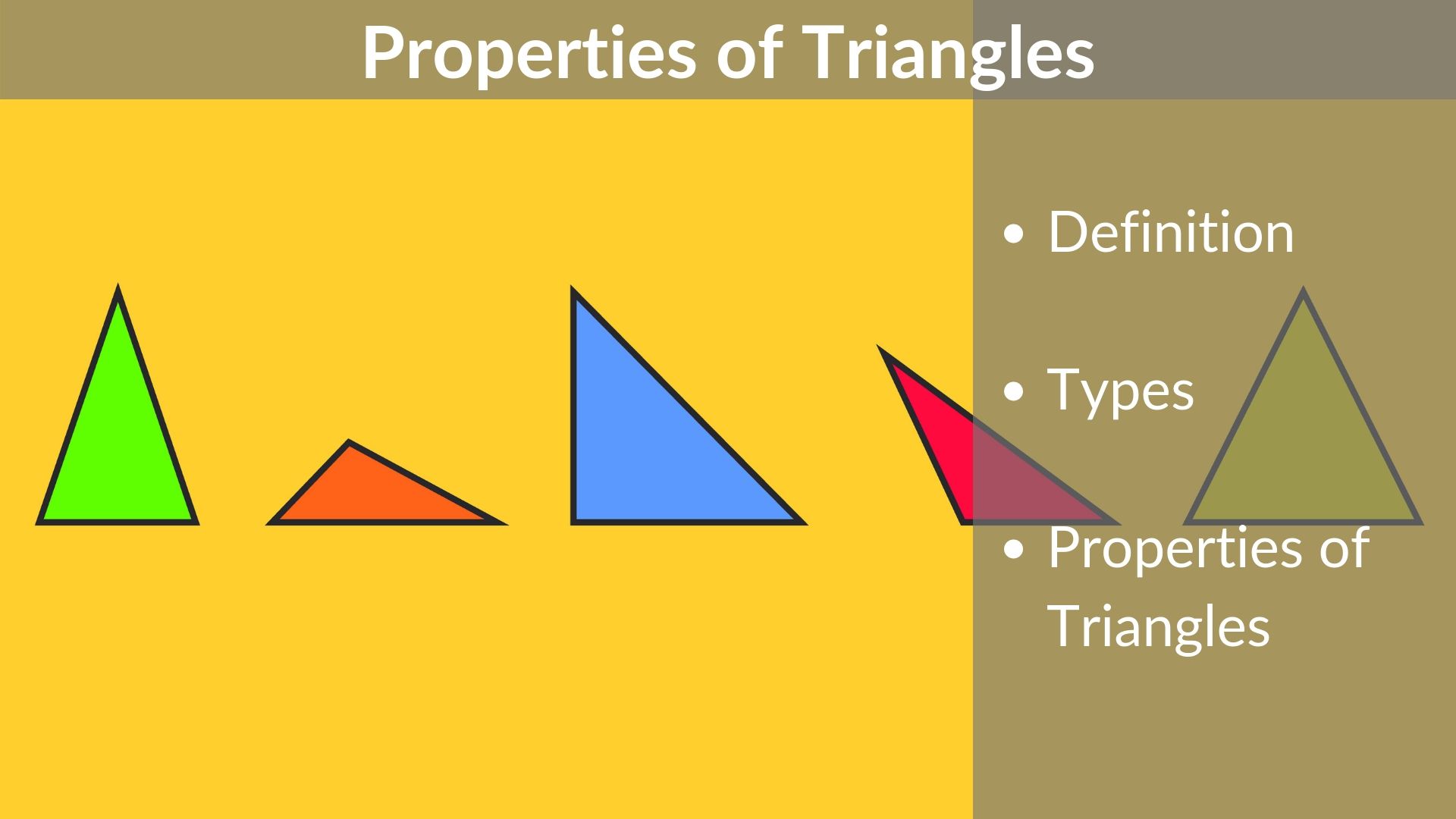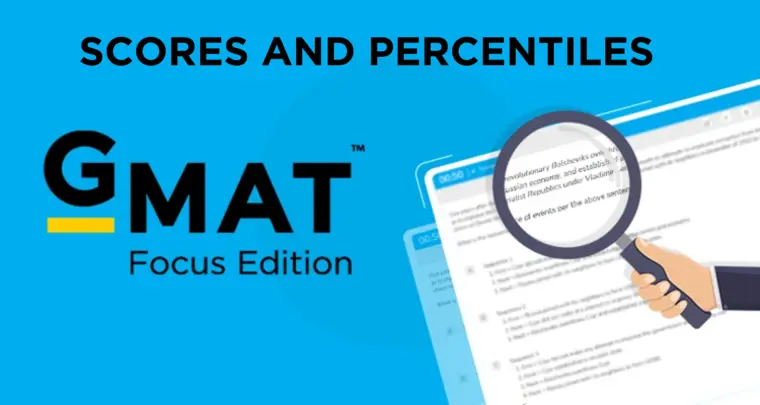Understanding the properties of triangle is crucial for GMAT geometry questions. The test rewards conceptual understanding rather than mere memorization, often requiring you to apply multiple triangle rules simultaneously to solve problems efficiently. This comprehensive guide covers all the essential triangle properties you need to master for GMAT success.
Key Takeaways: Triangle Concepts for GMAT Success
- Develop a systematic approach to triangle problems: identify the triangle type first (right, isosceles, equilateral), check for special angles, and apply the appropriate shortcuts based on the pattern recognized.
- Special triangles (equilateral, isosceles, and right triangles) function as geometric “shortcuts” that eliminate complex calculations; recognizing these patterns quickly can save valuable time during the GMAT exam.
- Choose the appropriate area formula based on available information: standard formula (1/2 × base × height) when height is given, and Heron’s formula when only the three sides are known.
Video Lesson on Triangles :
Questions on triangles are very commonly asked on the GMAT. Ace GMAT Quant by signing up for our free trial and get access to 400+ questions. We are the most reviewed online GMAT Prep company with 2700+ reviews on GMATClub.
Fundamental Triangle Rules and Properties
What is Angle Sum Property of a Triangle (180° Total)
The most fundamental property of triangle is that the sum of all interior angles always equals 180 degrees. This holds true for every triangle, regardless of type—acute, obtuse, right, equilateral, isosceles, or scalene.
Mathematically expressed: ∠A + ∠B + ∠C = 180°
This foundational triangle rule appears in GMAT questions in several ways:
- Direct application: When two angles are given, you can easily find the third.
- Example: If two angles measure 45° and 60°, the third angle must be 75° (180° – 45° – 60° = 75°).
- Algebraic expressions: GMAT often presents angles using variables and expressions.
- Example: If the three angles are represented as (3x)°, (2x+15)°, and (x+25)°, you can set up:
(3x) + (2x+15) + (x+25) = 180
6x + 40 = 180
6x = 140; x = 23.33°
- Example: If the three angles are represented as (3x)°, (2x+15)°, and (x+25)°, you can set up:
GMAT Test Strategy:
As soon as you recognize a triangle, mentally note that the angles must sum to 180°
In data sufficiency questions, check if you can determine all angles using this property
When two angles are known, immediately calculate the third
Did you know that a high GMAT score can increase your chances of admission to your dream B-school? Moreover, a GMAT score of 730+ yields an incremental $500k in ROI. Here is how we can help:
Begin your GMAT preparation with the only prep company that has delivered more 700+ scores than any other GMAT club partner. Achieve GMAT 740+ with our AI driven tools that you personalized feedback at every step of your GMAT journey. Take our free trial today!
Triangle Inequality Theorem
The Triangle Inequality Theorem is a crucial side property of a triangle that determines whether a triangle can exist given three side lengths. This property helps eliminate impossible answer choices on the GMAT.
The theorem has two key components:
- Sum Inequality: The sum of any two sides must be greater than the third side. For sides a, b, and c:
- a + b > c
- a + c > b
- b + c > a
- Difference Inequality: The absolute difference of any two sides must be less than the third side.
- |a – b| < c
- |a – c| < b
- |b – c| < a
GMAT Applications:
- Example 1: Can lengths 3, 4, and 8 form a triangle? Check: 3 + 4 = 7, which is less than 8, so these lengths cannot form a triangle.
- Example 2: If two sides of a triangle have lengths 5 and 10, what is the possible range for the third side x? Using the inequalities:
- 5 + 10 > x (so x < 15)
- |5 – 10| < x (so x > 5)
- Therefore, 5 < x < 15
GMAT Test Strategy:
Use this theorem as a quick check to eliminate impossible scenarios
Be alert for “trap” answers that create “degenerate” triangles (where the sum of two sides equals the third side)
For variable expressions, establish the range of possible values using these inequalities
Interior and Exterior Angle Properties of Triangles
Understanding the relationships between interior and exterior angles gives you powerful tools for solving complex GMAT geometry problems.
Interior Angle Properties:
- Sum Property: The sum of interior angles always equals 180°
- Complementary Angles: In a right triangle, the two non-right angles sum to 90°
- Isosceles Triangle: If two sides are equal, then the angles opposite those sides are equal
- Equilateral Triangle: All interior angles equal 60°
Exterior Angle Properties
Exterior angle properties of triangles are frequently tested on the GMAT:
- An exterior angle of a triangle equals the sum of the two non-adjacent interior angles
- Mathematically: ∠exterior = ∠non-adjacent1 + ∠non-adjacent2
- The sum of exterior angles (one at each vertex) equals 360°
GMAT Applications:
Example: If an exterior angle at vertex A is 125° and an interior angle at vertex B is 40°, what is the interior angle at vertex C?
Solution: Using the exterior angle theorem, 125° = 40° + ∠C, therefore ∠C = 85°
GMAT Test Strategy:
Always draw exterior angles when they’re mentioned in problems
Use exterior angles to create additional equations in complex problems
In diagrams with multiple triangles, track how exterior angles of one triangle relate to interior angles of adjacent triangles
Angle-Side Relationship (Larger Angles Opposite Larger Sides)
This relationship is often overlooked but can save you valuable time on the GMAT by allowing quick deductions about triangle properties.
Key Principles:
- Side-Angle Relationship:
- The largest angle is opposite to the longest side
- The smallest angle is opposite to the shortest side
- In general, sides and their opposite angles have the same relative ordering
- Equal Sides and Angles:
- If two sides are equal (isosceles triangle), the angles opposite these sides are equal
- If all sides are equal (equilateral), all angles are equal (60° each)
- Conversely, if two angles are equal, the sides opposite them are equal
GMAT Applications:
Example: In triangle ABC, if AB = 7, BC = 5, and AC = 6, how would you order the angles from largest to smallest?
Solution: The sides from longest to shortest are AB (7), AC (6), and BC (5). Since the largest angle is opposite the longest side, the angles from largest to smallest are: ∠C (opposite AB), ∠B (opposite AC), and ∠A (opposite BC)
GMAT Test Strategy:
Note the relationship between sides and angles to make quick deductions
Use this property as a cross-check to verify answers
In problems with limited information, use this relationship to determine what’s possible
Types of Triangle and Their Special Properties
Properties of Equilateral Triangle
Equilateral triangles are the geometric equivalent of identical triplets—everything matches perfectly. These special triangles have unique properties that can quickly solve GMAT problems.
Key Properties of Equilateral Triangle:
- All three sides have equal length (typically denoted as s)
- All three angles equal 60°
- Three axes of symmetry
- Area = (√3/4) × s²
- Height (from any vertex to the opposite side) = (√3/2) × s
- Perimeter = 3s
- All centers (centroid, orthocenter, incenter, and circumcenter) coincide at the same point
Quick Tip: When you see a problem mentioning “all sides equal” or involving 60° angles, immediately recognize you’re dealing with an equilateral triangle and apply its special properties to save time.
Properties of Isosceles Triangle
Isosceles triangles are like fraternal twins—two sides match, and the third is different. Understanding these properties can simplify many GMAT geometry questions.
Key Properties of Isosceles Triangle:
- Two sides have equal length (typically denoted as a)
- The third side is often called the base (typically denoted as b)
- The two angles opposite the equal sides are equal
- The angle between the equal sides is called the vertex angle
- Has one axis of symmetry through the vertex angle and the midpoint of the base
- Height to the base = √(a² – (b/2)²)
- Area = (b/2) × height = (b/2) × √(a² – (b/2)²)
- The perpendicular from the vertex to the base bisects the base
Quick Tip: In an isosceles triangle, the height to the base creates two right triangles. This property can be used to find unknown sides or angles quickly.
Properties of Right Triangle
If special triangles were a family, right triangles would be the hardworking parent—they’re involved in almost everything in GMAT geometry.
Key Properties of Right Triangle:
- One angle is exactly 90° (right angle)
- The other two angles are complementary (sum to 90°)
- The side opposite the right angle is called the hypotenuse
- The other two sides are called legs
- Pythagorean theorem: a² + b² = c², where c is the hypotenuse and a, b are the legs
- Area = (1/2) × a × b
- The altitude to the hypotenuse divides the right triangle into two similar triangles
- The midpoint of the hypotenuse is equidistant from all three vertices
Quick Tip: When a problem involves finding distances or areas, look for right triangles. They often provide the simplest solution path.
Special Right Triangles for GMAT Success
Special right triangles are powerful time-savers on the GMAT. While other test-takers might spend precious minutes calculating sides and angles, you’ll be able to recognize patterns instantly and jump straight to the answer.
30-60-90 Triangle Properties
These special right triangles have fixed angle and side relationships that appear frequently on the GMAT:
- Angles: 30°, 60°, 90°
- Side Ratio: 1 : √3 : 2 (opposite to the angles 30°, 60°, 90° respectively)
- Creation: Split an equilateral triangle in half
- Important Relationships:
- If the shortest leg (opposite 30°) = x:
- Middle leg (opposite 60°) = x√3
- Hypotenuse (opposite 90°) = 2x
- Area = (x²√3)/2
- If the shortest leg (opposite 30°) = x:
45-45-90 Triangle Properties
This is both a right triangle AND an isosceles triangle, allowing you to apply properties from both categories:
- Angles: 45°, 45°, 90°
- Side Ratio: 1 : 1 : √2 (for the legs and hypotenuse)
- Creation: Cut a square diagonally
- Important Relationships:
- If the legs (opposite 45°) = x:
- Hypotenuse (opposite 90°) = x√2
- Area = x²/2
- If the legs (opposite 45°) = x:
Questions on triangles are very commonly asked on the GMAT. Ace GMAT Quant by signing up for our free trial and get access to 400+ questions. We are the most reviewed online GMAT Prep company with 2700+ reviews on GMATClub.
Save 60+ hours of GMAT preparation by crafting a well-defined study plan in just 3 steps:
Quick Recognition Tips for Special Triangles
Practice identifying special triangles with these GMAT-style scenarios:
Scenario 1: A triangle has one angle of 90° and another angle of 45°. What is the measure of the third angle, and what special triangle type is this?
Analysis: Since angles in a triangle sum to 180°, the third angle must be 180° – 90° – 45° = 45°. This is a 45-45-90 triangle. You should immediately recognize that if the legs have length x, the hypotenuse will be x√2.
Scenario 2: A triangle has sides of lengths 5, 5, and 8. What type of triangle is this, and what is the height to the side of length 8?
Analysis: This is an isosceles triangle (two equal sides of length 5). To find the height: h = √(5² – (8/2)²) = √(25 – 16) = √9 = 3
Recognizing this as isosceles saves time by letting you use the specific height formula.
Triangle Area Formulas and Calculations
Standard Area Formula
The most common triangle area formula requires knowing the base and height:
Area = (1/2) × base × height
Example GMAT Problem: A triangular garden has a base of 8 meters and a height of 6 meters. What is the area of the garden?
Solution: Area = (1/2) × 8 × 6 = 24 square meters
Heron’s Formula
When you only know the three side lengths, Heron’s Formula is your go-to triangle area formula:
Area = √[s(s-a)(s-b)(s-c)]
Where s is the semi-perimeter: s = (a + b + c)/2
Example GMAT Problem: A triangle has sides measuring 5, 7, and 10 units. What is its area?
Solution:
- Calculate the semi-perimeter s = (5 + 7 + 10)/2 = 11
- Apply Heron’s formula: Area = √[11(11-5)(11-7)(11-10)] = √[11 × 6 × 4 × 1] = √264 ≈ 16.25 square units
Perimeter and Semi-perimeter Applications
Understanding perimeter calculations is essential for many GMAT triangle problems:
- Perimeter Formula: Perimeter = a + b + c (where a, b, c are the lengths of the sides)
- Semi-perimeter Formula: s = (a + b + c)/2
Example Problem: A triangular park has sides of lengths 12, 16, and 20 meters. If fencing costs $35 per meter, what is the total cost to fence the entire park?
Perimeter = 12 + 16 + 20 = 48 meters
Total cost = 48 × $35 = $1,680
Common Triangle Traps on the GMAT
Top 5 Misconceptions About Triangle Properties
- The “Assumed Right” Trap
- The Trap: Assuming a triangle is a right triangle when it’s not explicitly stated
- The Tell: Diagram showing a right angle symbol, or the problem mentions perpendicular lines
- The Solution: Only apply the Pythagorean theorem when a right angle is confirmed through given information, not visual cues
- The “False Isosceles” Trap
- The Trap: Assuming a triangle is isosceles based on the diagram or partial information
- The Tell: Equal angles mentioned without stating equal sides (or vice versa)
- The Solution: Confirm that both conditions for an isosceles triangle are met before applying special properties
- The “Area Miscalculation” Trap
- The Trap: Using the wrong base or height in area calculations
- The Tell: Problems involving triangles with non-obvious heights
- The Solution: Always ensure the height is perpendicular to the base in area calculations
- The “Triangle Inequality” Trap
- The Trap: Selecting an answer that violates the triangle inequality theorem
- The Tell: Problems asking for possible side lengths or ranges of values
- The Solution: Verify that the sum of any two sides is greater than the third side
- The “Side-Angle Confusion” Trap
- The Trap: Mixing up the relationship between sides and angles
- The Tell: Problems asking about ordering sides or angles
- The Solution: Remember that the largest angle is opposite the longest side
Questions on triangles are very commonly asked on the GMAT. Ace GMAT Quant by signing up for our free trial and get access to 400+ questions. We are the most reviewed online GMAT Prep company with 2500+ reviews on GMATClub.
Practice Problems Using Triangle Properties
Basic Level Triangle Problems
Problem 1: Right Triangle Basics
In a right triangle ABC with the right angle at C, if AB = 5 and AC = 4, what is the length of BC?
Solution: Using the Pythagorean theorem: AB² = AC² + BC² 5² = 4² + BC² 25 = 16 + BC² BC² = 9 BC = 3
Problem 2: Special Triangle Application
In an isosceles triangle XYZ, angles X and Z are equal. If angle Y is 30°, what are the measures of angles X and Z?
Solution: In any triangle, the sum of all angles is 180°. X + Y + Z = 180° Since X = Z (isosceles triangle) and Y = 30°: X + 30° + X = 180° 2X = 150° X = 75° Therefore, X = Z = 75°
Intermediate Level Problems
Problem 3: Similar Triangles
Triangle ABC is similar to triangle DEF, with a similarity ratio of 2:3. If the area of triangle ABC is 8 square units, what is the area of triangle DEF?
Solution: When two triangles are similar with a side ratio of a, their area ratio is a². Given information:
- Similarity ratio of ABC to DEF is 2:3
- Area of triangle ABC is 8 square units
To find the area of DEF: Area ratio = 2²:3² = 4:9 If area of ABC = 8, then: Area of DEF = 8 × (9/4) = 18 square units
Advanced Level Problems
Problem 4: Data Sufficiency Triangle Problem
What is the area of triangle ABC? (1) The coordinates of the vertices are A(0,0), B(3,0), and C(3,4). (2) Triangle ABC is a right triangle with the right angle at B.
Solution: Analysis of Statement (1): Using the coordinates, we can calculate the area directly: Area = ½|x₁(y₂ – y₃) + x₂(y₃ – y₁) + x₃(y₁ – y₂)| Area = ½|0(0 – 4) + 3(4 – 0) + 3(0 – 0)| Area = ½|0 + 12 + 0| Area = 6 square units
Since we can calculate a unique value for the area, Statement (1) is sufficient.
Analysis of Statement (2): Knowing that ABC is a right triangle with the right angle at B tells us about the shape but not the size. Without information about the lengths of at least two sides or the coordinates, we cannot determine the area.
Statement (2) alone is insufficient.
For more practice questions on triangles and geometry, sign up for our free trial. We have more than 400+ practice questions and 10+ hours of AI-driven video lessons.
Conclusion
This guide has taken you from fundamental properties of triangle to advanced theorem applications, equipping you with the comprehensive triangle knowledge necessary for GMAT success. You’ve learned the essential angle and side properties of a triangle, mastered special triangle types, practiced applying critical formulas, and understood when to use key triangle rules in complex problems.
By working through the progressive practice problems and applying the error-checking strategies, you’re now well-positioned to tackle even the most challenging triangle questions on the GMAT. Remember that recognizing patterns and quickly identifying the appropriate approach is often more valuable than memorizing formulas.
The true power of triangle properties mastery on the GMAT comes not just from knowing individual concepts, but from seeing how they interconnect. This integrated understanding is what separates average scores from exceptional ones.
If you liked this article, you may also like to read the following advanced level articles on triangles
- GMAT Geometry Concepts and Formulas on Triangles (Part-1)
- Properties of Triangles: Practice Questions (Part-2)
- Special Properties of Triangles (Part-3)
Here are a few more articles that you may like to read:
- Properties of Quadrilateral
- Properties of Numbers: Even/Odd, Prime, and HCF & LCM
- Properties of Circle
- Properties of Lines and Angles
Did you know e-GMATers have reported more 700+ scores than ever before in GMAT Club’s history? Watch this video to understand how e-GMAT has achieved this record-shattering result by investing and innovating with a single goal in mind – To create a platform that empowers students to achieve and deliver their very best.
If you are planning to take the GMAT, we can help you with a personalized study plan and give you access to quality online content to prepare. Write to us at acethegmat@e-gmat.com. We are the most reviewed GMAT prep company on gmatclub with more than 2700 reviews and are the only prep company that has delivered more than 700+ scores than any other GMAT club partner. Why don’t you take a free trial and judge for yourself?
FAQ – Properties of a triangle
The most important triangle properties for GMAT success include:
1. The Angle Sum Property (all interior angles sum to 180°)
2. Triangle Inequality Theorem (sum of any two sides must be greater than the third side)
3. Side-Angle Relationship (larger angles are opposite to longer sides)
4 Interior and Exterior Angle Relationships (an exterior angle equals the sum of the two non-adjacent interior angles)
You can learn about the unique properties of the following triangle types:
Properties of Special Triangles (equilateral, isosceles, and right triangles)
Special Right Triangles ratios (30-60-90 and 45-45-90)
The three fundamental properties of a right triangle on the GMAT are:
One angle is exactly 90° (the right angle)
The Pythagorean theorem applies: a² + b² = c², where c is the hypotenuse (the side opposite the right angle) and a and b are the legs
The two non-right angles are complementary, meaning they sum to 90°
For special cases, see the Special Right Triangles section to learn about the time-saving 30-60-90 and 45-45-90 triangles.
A 30-60-90 triangle is a special right triangle with angles of 30°, 60°, and 90° that follows these rules:
1. It’s created by splitting an equilateral triangle in half
2. The sides follow a ratio of 1 : √3 : 2 corresponding to the sides opposite the 30°, 60°, and 90° angles respectively
3. If the shortest side (opposite the 30° angle) is x, then:
The middle side (opposite the 60° angle) = x√3
The hypotenuse (opposite the 90° angle) = 2x
This triangle is a critical “shortcut” for the GMAT as recognizing it instantly gives you all side relationships without calculation.
Practice with the Special Triangle Matrix to quickly identify and apply these properties during the exam.
An equilateral triangle has “perfect symmetry” with these essential properties:
All three sides have equal length (commonly denoted as s)
All three angles equal 60°
All centers (centroid, orthocenter, incenter, and circumcenter) coincide at the same point
When a GMAT problem mentions three equal sides or three 60° angles, immediately recognize it as an equilateral triangle and apply these properties.
Equilateral triangles are also closely related to 30-60-90 triangles, as splitting an equilateral triangle in half creates a 30-60-90 triangle. This relationship can be particularly useful for solving complex GMAT geometry questions efficiently.
The 45-45-90 rule describes the properties of an isosceles right triangle:
It has two 45° angles and one 90° angle
It can be created by cutting a square diagonally
The two legs (sides opposite the 45° angles) are equal in length
The sides follow a ratio of 1 : 1 : √2 (legs : legs : hypotenuse)
If each leg has length x, then the hypotenuse equals x√2
This special triangle is both a right triangle AND an isosceles triangle, allowing you to apply properties from both categories when solving problems. The 45-45-90 triangle is one of the most common special triangles on the GMAT.
Essential triangle formulas for the GMAT include:
Basic Properties:
Angle Sum: A + B + C = 180°
Perimeter: a + b + c (sum of all sides)
Semi-perimeter: s = (a + b + c)/2
Area Formulas:
Standard formula: Area = (1/2) × base × height
Heron’s formula: Area = √[s(s-a)(s-b)(s-c)] (when only sides are known)
You can learn more about the formaulas for the special triangles here.
To quickly identify which triangle property to apply on the GMAT:
1. First identify the triangle type:
Look for right angles (90°)
Check if two or more sides/angles are equal (isosceles)
Note if all sides/angles are equal (equilateral)
Look for special angle measurements (30°, 45°, 60°)
2. Check for keywords and given information:
“Perpendicular” suggests a right triangle → apply Pythagorean theorem
Equal sides or angles → apply isosceles properties
All sides equal → apply equilateral properties
When only sides are given → consider Triangle Inequality Theorem or Heron’s formula
When angle-side relationships are emphasized → apply the property that larger angles are opposite larger sides
3. Use the Triangle Knowledge Hierarchy approach described in the blog:
Start with basic properties (angle sum, triangle inequality)
Progress to special triangle properties as needed
Apply advanced concepts (similarity, coordinate geometry) for complex problems
The fastest way to calculate a triangle’s area depends on the available information:
When base and height are given: Area = (1/2) × base × height
When all three sides are known (but no height):
– Use Heron’s formula: Area = √[s(s-a)(s-b)(s-c)], where s = (a+b+c)/2
For special triangles: Look at the formulae for each special triangle here.
When coordinates are given:
Use the coordinate geometry formula shown in Problem 6 in the blog















